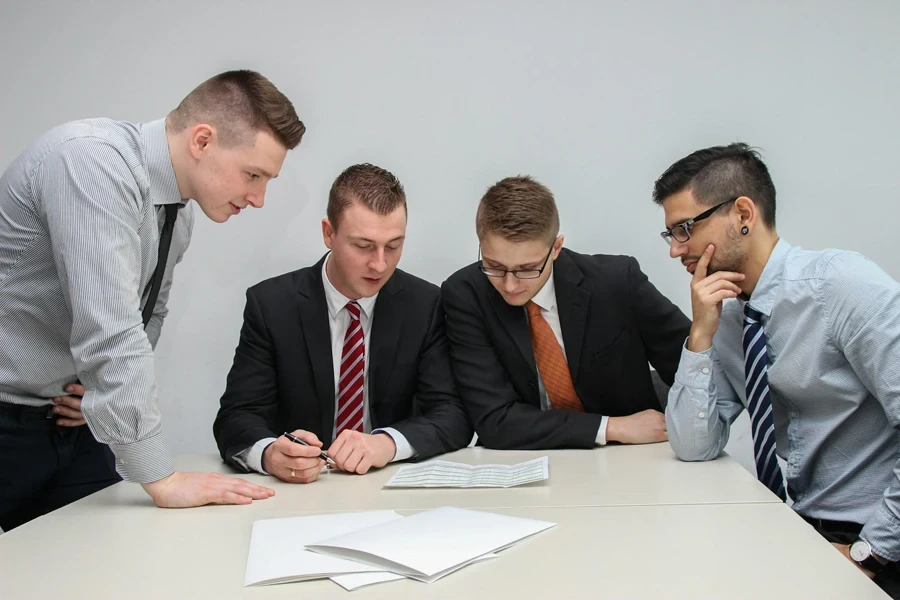“The only thing that is constant is change.” — Heraclitus
When we frame this saying of Heraclitus into the freight industry, the term “change” becomes more suitable to be depicted as volatility instead, judging from the unpredictability and highly sensitive nature of the freight market to many factors. This is especially true in terms of the sudden changes in shipping industry-specific demand and supply, which greatly influence the market’s expectations on future freight rate fluctuations.
Find out more details about the types and impacts of freight volatility and the relevant steps to mitigate freight volatility in the following sections.
Table of Contents
1. Exploring freight volatility
2. Impact of freight volatility
3. Steps to mitigate the impact of freight volatility
4. Staying in control through volatility
Exploring freight volatility

Freight volatility refers to the frequent and unpredictable changes in the freight market, which typically involve fluctuations in freight rates and capacity, economic and market conditions, environmental or other external factors, and policy or regulatory changes.
Freight rate fluctuations are the most commonly observed aspect of freight volatility since they are highly reactive to various influences and align with the inherent uncertainty in the global supply chain field. Supply chain uncertainties, ranging from geopolitical tensions to economic conditions, are among the primary drivers that significantly impact freight rate changes. More specifically, geopolitical events and macroeconomic conditions, such as regional instabilities, trade disruptions, and inflations, can lead to an overall market supply and demand imbalance due to their widespread effects.
At the same time, capacity constraints induced by these demand fluctuations, especially during peak seasons and due to seasonal and regional market dynamics, can further elevate freight rates as carriers across the board generally increase prices in response to heightened demand. To aggravate the situation, such a rate hike is often compounded by the fact that most carriers tend to impose additional, unexpected surcharges during these limited schedule periods, which is another unequivocal contributing factor to freight rate volatility.

The competitive dynamics of freight industry market practices that tend to rely on tenders, biddings, and all sorts of freight agreements add another layer of volatility in view of the speculative and anticipatory nature of these contracts. Higher tender rejection rates, which were recorded over the past few months, albeit smaller compared to previous peaks, serve as another clear indication of looming potential capacity shortages and market volatility.
Market conditions and all other related factors aside, natural disasters and even some unexpected incidents such as the Baltimore Bridge collapse that happened earlier this year also cast ambiguity in freight disruptions while causing both rates and capacity fluctuations.
Lastly and equally important is the impact of policy updates and regulatory changes. For example, some labor policies or negotiation-related updates may cause freight capacity issues in case of any labor disputes or potential strikes, and can further amplify the freight rate fluctuations. Similarly concerning are updates in laws, tariffs, regulatory requirements or increased compliance demands that shape market stability, as such regulatory adjustments often cause disruptions and make overall freight operations more unpredictable. A good example may be a surge in import volumes ahead of the implementation of newly planned tariffs.
Impact of freight volatility

There are profound impacts of freight volatility on general businesses, which often significantly amplify the otherwise manageable cost levels. The impact of rising freight costs on total operating expenses is evident since it means not only do the delivery costs to end customers increase but also the cost of acquisition (including shipping) from suppliers. It’s akin to fighting a battle on two fronts, leading to an overall escalation in business expenses. Yet perhaps the most detrimental long-term effect on operational costs due to freight volatility is the additional time and effort required to seek alternative shipping options, including carriers, routes, and schedules, in order to mitigate delays and inefficiencies.
Besides higher operational costs, the diminished operational efficiency is greatly exacerbated as freight volatility continues to present challenges for both carriers and shippers, making it increasingly difficult for them to accurately predict business volumes and plan resources. This, in turn, adversely affects supply chain efficiencies, as all stakeholders struggle to keep up with new data and trends to ensure well-informed decisions to navigate the volatile conditions effectively.

Furthermore, since no customers are going to feel satisfied when shippers inevitably transfer the increased freight transportation costs to end-user prices, overall customer satisfaction is compromised and at risk. Ultimately, the combined impact of these factors results in financial instability and greater economic pressure on companies, causing potential cash flow issues and adversely affecting overall profitability.
Steps to mitigate the impact of freight volatility
Expand and diversify networks and partnerships

Expanding carrier networks by increasing the total number of carriers and suppliers through strategic sourcing is undoubtedly one of the most effective and direct ways to manage costs and reduce the impact of freight volatility, since an expanded network and partnership provide more options and competitive rates. However, as the primary goal of expanding the carrier and supplier network is to reduce dependency on a few sources, consequently, it’s equally critical to diversify the customer base to increase income sources and accommodate the potentially rising volume and demand in freight services. Partnering with a reliable freight broker who is experienced enough to support and provide expert advice to navigate volatile markets is also highly beneficial.
The ultimate goal is to establish a network of reliable carrier partners to provide consistent service at competitive, stable costs throughout volatile times. While this may appear simpler in words than in action, there’s a rather straightforward approach to achieve this—sourcing freight providers and logistics solutions from online logistics marketplaces such as the Alibaba.com Logistics Marketplace.

Fully equipped with all the essential web logistics marketplace functions and granting users access to some of the most reliable and recommended freight forwarders with extensive global route options, Alibaba.com Logistics Marketplace works only with selected proficient service providers who have passed through a thorough selection process.
It can hence serve as a valuable tool in carrier network diversifications. Through the comprehensive “quote lookup tool” available on the platform, users can search for various logistics solutions, including ocean and express services, and compare quotes from numerous freight providers. At the same time, users can also make instant contact with the freight forwarder through its integrated chat function and enjoy round-the-clock customer support, all functions essential to help users to expand network diversity quickly and reliably.
Effective contract management and negotiation

Effective contract management and negotiation can be a highly effective way to tackle the inevitable freight market dynamics which is usually working around tenders, biddings, and various freight agreements.
Strategic contract negotiations encompass supplier negotiations and various innovative approaches in collaboration with freight partners. For instance, seeking contractual agreements with dynamic pricing and fixed capacities in return for slightly longer-term agreements can help stabilize costs over a prolonged period. Meanwhile, actively negotiating new contracts during low-demand seasons is another technique to lock in favorable terms and low rates to mitigate future volatility before the market rebounds.
Turning towards mini-bids rather than traditional annual bids or long-term contracts is another way to secure freight contracts at rates based on actual capacity needs according to the latest market conditions. With shorter terms and smaller scales in terms of volume and duration, these mini-bids allow shippers to stay responsive to market changes with agreed volume for carriers and can be particularly appealing during periods of volatility.
Advanced planning and forecasting
Beyond establishing reliable partners and engaging in strategic contract negotiation, adopting long-term, advanced planning that includes predictive forecasting and improved statistical forecasting through the aid of Artificial Intelligence (AI) and Machine Learning (ML) is another step that can address volatile conditions with enhanced accuracy and readiness.
Companies must also strive to actively and meticulously monitor market indicators and economic conditions, being adaptable to various transportation modes to mitigate risks and optimize operations and devising robust contingency freight management plans with these diverse options.
Agile logistics and flexible operations

Imagine being in a highly volatile situation where everything keeps on changing and evolving, what’s the optimal strategy for maintaining control under such conditions? Agility and flexibility are undoubtedly some of the most effective strategies to help stay vigilant while maintaining composure to think of more innovative approaches.
That is why agile logistics or agile supply chains, which emphasize adaptability, speed, and efficiency in response to changing market situations, are evidently a strategic approach to staying afloat during highly volatile times. With advancements in technologies such as AI, IoT, and Machine Learning, businesses can now gain greater supply chain visibility with various technology-enhanced controls to manage common logistics issues like traffic and port congestion, vehicle breakdown, urgent orders, and unexpected route changes.
Staying in control through volatility
From freight rate and capacity fluctuations to economic and market conditions and policy or regulatory updates, freight volatilities manifest in various forms and magnitudes, impacting all parties and stakeholders involved from different angles. As a result of these freight volatilities, financial and costing impacts are felt most acutely, followed by operational challenges which can significantly undermine the entire supply chain efficiency, while also risking and compromising customer satisfaction along the way.
To effectively mitigate these impacts, businesses are encouraged to expand and diversify their logistics networks and foster partnerships through various means, including online logistics platforms such as Alibaba.com Logistics Marketplace, which offers a list of carefully curated trusted logistics partners to collaborate with. Meanwhile, employing effective contract negotiation and breaking down contracts into different mini tenders, combined with advanced planning and forecasting through the strategic use of AI technologies, are also among the crucial steps worth exploring.
To stay informed and in control ahead of the competition, visit Alibaba.com Reads– your trusted source for the latest wholesale business insights and trends.

Looking for a logistics solution with competitive pricing, full visibility, and readily accessible customer support? Check out the Alibaba.com Logistics Marketplace today.




